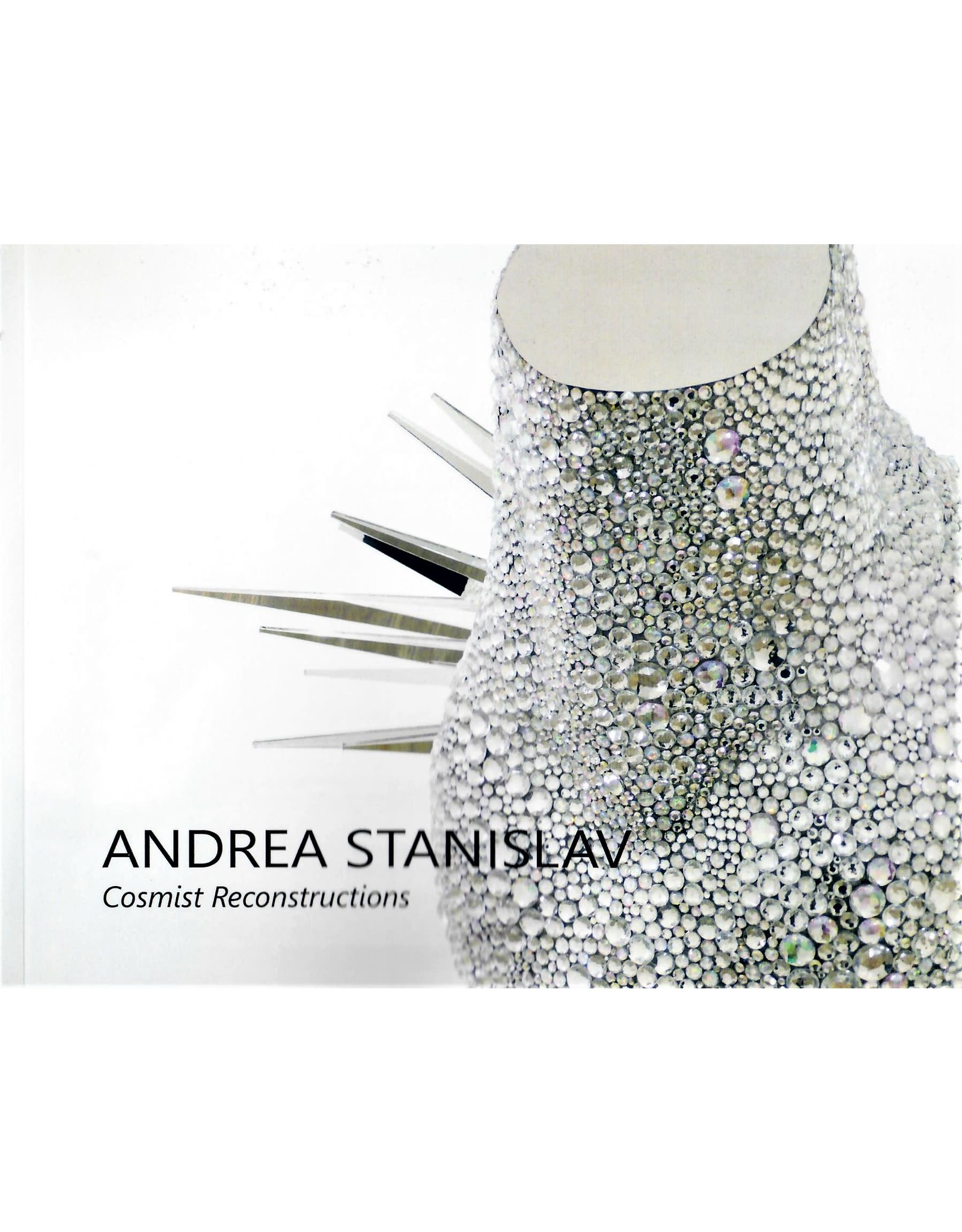Andrea Stanislav: Cosmist Reconstructions
| Availability: | In stock (1) |
Beautiful companion to the "Cosmist Reconstructions" exhibit by Andréa Stanislav, featured at The Museum of Russian Art (Fall 2021 - Spring 2022).
Andréa Stanislav (b. Chicago, 1968) is based in New York City, NY, and splits her practice between St. Petersburg, Russia, and Bloomington, Indiana, USA. Ms. Stanislav's hybrid practice spans sculpture, immersive multimedia installation, video and public art. Her artwork has been exhibited internationally and nationally at museums, contemporary art centers, galleries, biennials, art fairs and video festivals.
Russian cosmism (also Cosmism) is a philosophical and cultural movement that emerged in Russia at the turn of the 19th century, and again at the beginning of the 20th century. Driven by a burst of scientific investigation into interplanetary travel, largely inspired by early science-fiction writers and emerging niche philosophical movements.
Cosmism entails a broad theory of natural philosophy, combining elements of religion and ethics with a history and philosophy of the origin, evolution, and future co-existence of the cosmos and humankind. Russian Cosmism rejected the contemplative for the transformative, aiming to create not merely new art or philosophy but a new world. Cosmism went the furthest in its visions of transformation, calling for the end of death, the resuscitation of the dead, and free movement in cosmic space. It combined elements from both Eastern and Western philosophic traditions, as well as from the Russian Orthodox Church. Cosmism was one of the major influences on the Soviet Proletkult, and after the October Revolution, the term came to be applied to poetry of emotional paeans to the connection of physical labor, machines, and the collective of industrial workers around the image of the universal 'Proletarian' who strides forth from the earth to conquer planets and stars. Many ideas of the Russian cosmists were later developed by those in the transhumanist movement.
Among the major representatives of Russian cosmism was Nikolai Fyodorovich Fyodorov (1828–1903), an advocate of radical life extension by means of scientific methods, human immortality -- and resurrection of dead people. Cosmism was developed by Fyodorov in the late nineteenth century. He believed that humans had an ethical obligation not only to care for the sick but to cure death using science and technology; outer space was the territory of both immortal life and infinite resources.
After the revolution, a new generation pursued Fyodorov's vision. Cosmist ideas inspired visual artists, poets, filmmakers, theater directors, novelists (Tolstoy and Dostoevsky read his writings), architects, and composers, and influenced Soviet politics and technology. Other cosmists included Vladimir Vernadsky (1863–1945), who developed the notion of noosphere and the question of noosphere's evolution from biosphere, and Alexander Chizhevsky (1897–1964), pioneer of "heliobiology" (study of the sun's effect on biology). A minor planet -- 3113 Chizhevskij -- discovered by Soviet astronomer Nikolai Stepanovich Chernykh in 1978, is named after him. The outstanding Russian palaeontologist and sci-fi writer Ivan Yefremov developed the ideas of cosmism and has concluded that the communism is a necessary structure of the future society, which wants to survive in space.
In the 1930s, Stalin squashed Cosmism, jailing or executing many members of the movement. Today, when the philosophical imagination has again become entangled with scientific and technological imagination, the works of the Russian Cosmists seem newly relevant.


